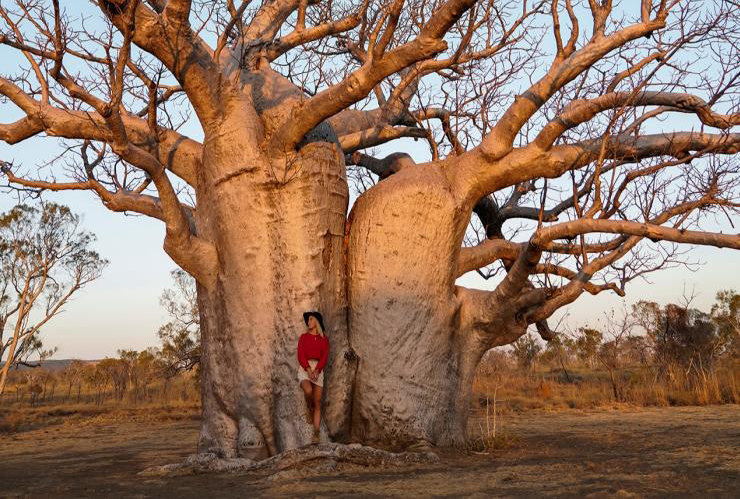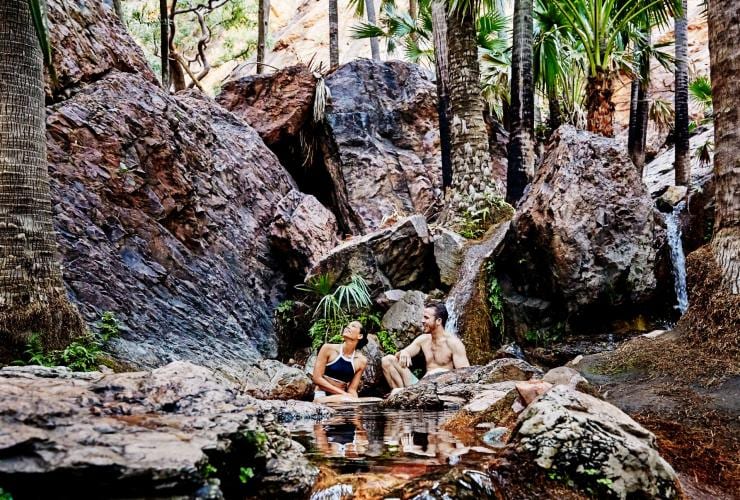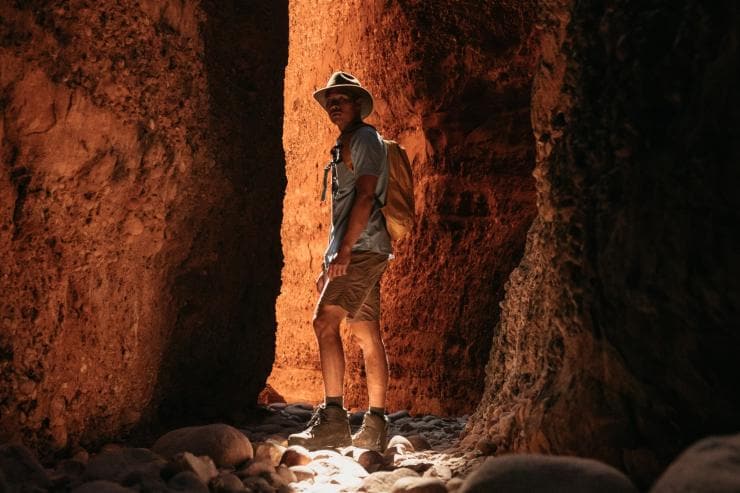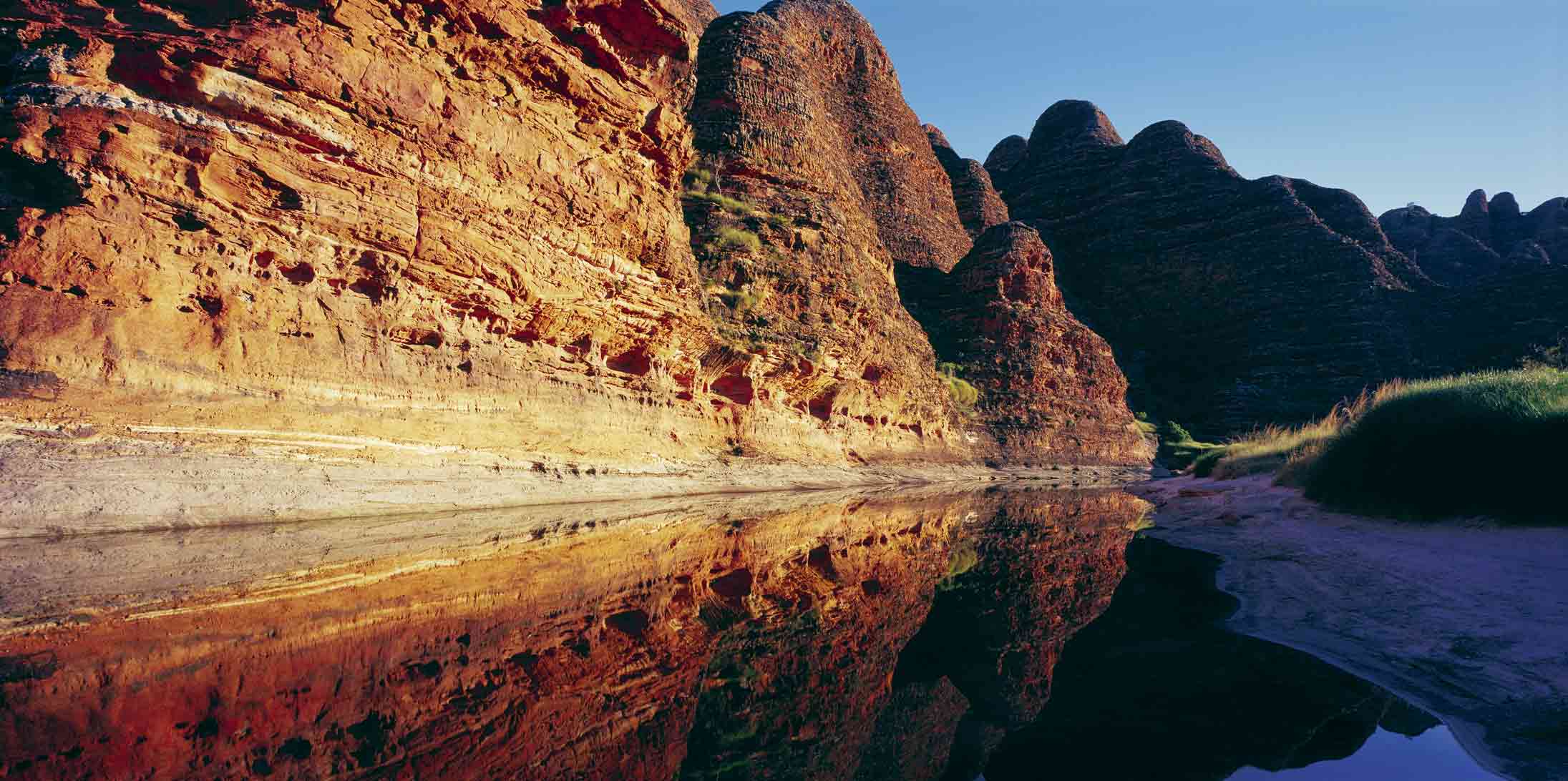
Travel Purnululu – The Bungles Secret Jewels
Words: Ken Eastwood | Feature Image: Nick Rains
In 1983, an enchanting, secret landscape was finally revealed to the world in all its majesty.
Deep in the East Kimberley, the land lay in wait, its dazzling colours and sculpted landforms known only to the Traditional Owners and a few others. Then a documentary crew revealed its beauty to all; their film, Wonders of WA, showcased the spectacular striped jewels we know as the Bungle Bungles for the first time. Within weeks of the broadcast, dozens of entranced viewers set out to see the beguiling formations for themselves. Four years later, it was declared a national park and, later, a World Heritage site. Even today, it’s still something of a secret because its sheer remoteness restricts visitor numbers but for those who make the effort by helicopter, plane or four-wheel-drive, it’s an unforgettable, haunting experience on a par with Australia’s other natural icons.
Most of the people who visit Purnululu National Park come to see the fragile beehive-like formations (a landform found in very few places worldwide). They were created as water eroded the Bungle Bungle Range over the past 20 million years. From the air or at a distance, some look like little pyramids or the turrets of ancient castles. Their unusual banding is only skin-deep. It’s dark grey or black where clay particles hold remnants of the wet season’s deluge long enough to encourage cyanobacteria to live, and orange where iron oxide has leached to the surface. The slightest touch breaks this thin skin and the white sandstone beneath blows away like fine flour because it has no silica or other bonding material.
When the sun is low on the horizon, these formations, which locals casually refer to as “the Bungles”, morph through an explosion of colours – purples, crimsons, reds and oranges. During the day, shifting shadows accentuate their shapes and structure, and the sun bleaches the colour from the rock, just as water over time has drained the iron oxide from within. To add to the gaudy display, the park has golden splashes of flowering wattles, spinifex greener than the lushest lawns and cloudless blue skies, all of them vividly reflected in inviting pools.
“It’s pretty hard to leave here without saying ‘Wow’”, says Paul Wainwright, who’s lived and worked in the Bungles for more than 30 years. “I still go down to the beehive formations and never get sick of them. There’s always something different. Colours change. When there’s a big Wet, everything becomes very green”. Paul was one of the first off-roaders to explore the region and one of the two people who first recorded two of the park’s main attractions, Echidna Chasm and Mini Palms Gorge.
A slot in the range just a couple of metres wide, Echidna puts on a spectacular display in the middle of the day as the sun penetrates its dark recesses. Paul was exploring the steep-sided north-western face of the Bungle Bungle Range with his dad when they found the way in. “We got in to where it bells out a bit and we thought that was where it ended…but it keeps going”, he says. “Today, Echidna is still one of my favourite spots”.
Stunning cabbage tree palms guard Echidna’s entrance, their long, green fronds high-fiving each other while rainbow bee-eaters zip about and great bowerbirds dine on wild passionfruit. The conglomerate rock here is chunky, with large rocks and boulders compressed into 180 m-high orange walls. Palms lean precariously over them, seemingly craning their long necks to listen to the echoing voices and occasional yodelling that rise from the skinny chasm. At nearby Mini Palms Gorge, the palms predominate among the vines, figs and other vegetation. The gorge’s walls – although much further apart – still provide deliriously cool respite from temperatures that push 30°C even in the coolest months. From the air, it becomes clear these gorges are just two of many sliced into the 45,000ha range that withhold secrets of hidden caves, unknown plants and the oldest continuing culture. Some, such as Echidna, are so deep and narrow they only see the sun for a fraction of each day.
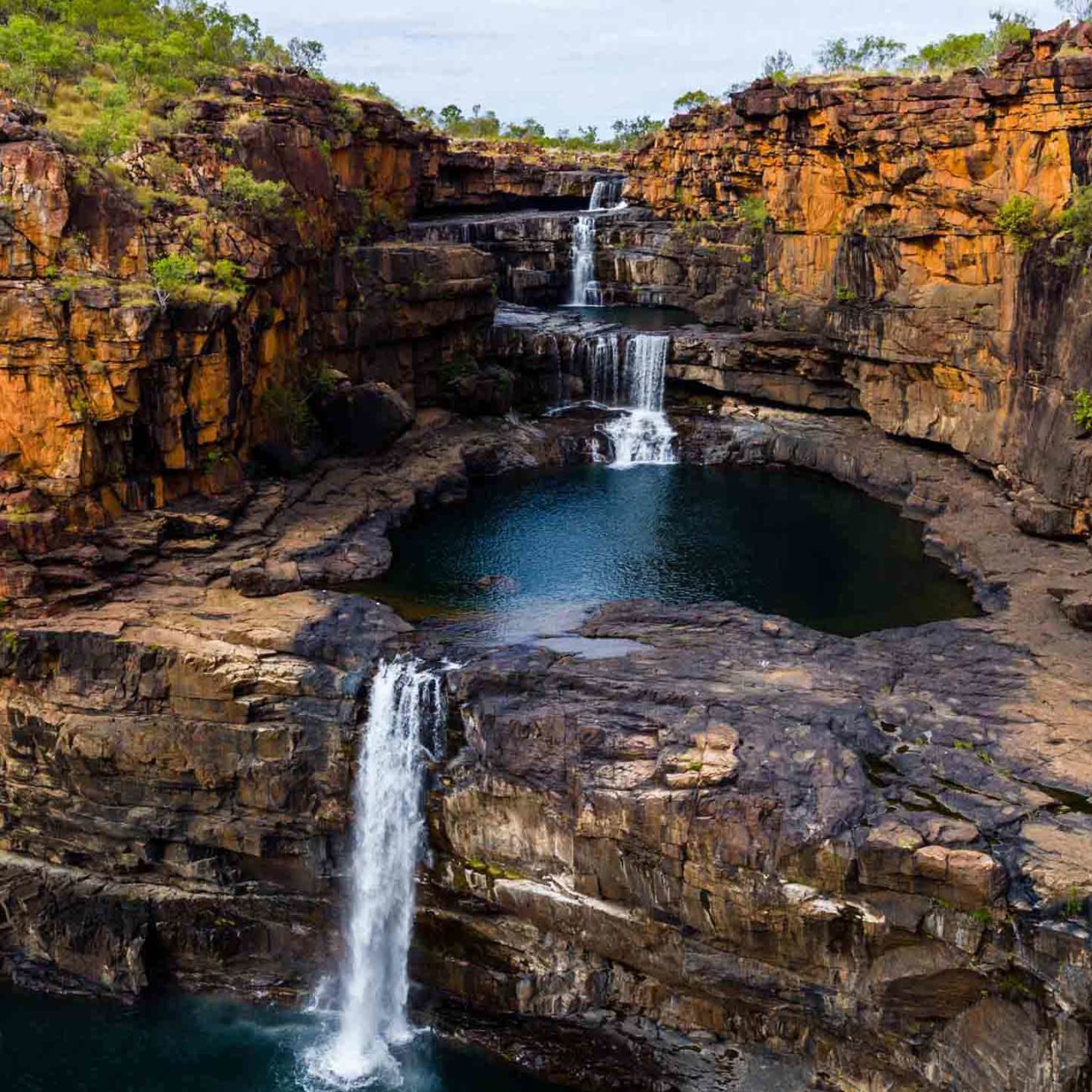
Mitchell Falls. Image credit: Jason Edwards/Alamy
Near the airstrip on the range’s south-western side sit two luxurious camps, each licensed to take up to 60 guests, their semi-permanent tents (some with showers and flushing dunnies) set among wattles, bauhinia trees and native hibiscus. Meanwhile, the two well-appointed public camping grounds take about 300 people between them.
Birdwatchers need go no further – beautiful red-backed fairy-wrens flit around camp, double-barred finches fly in for a drink, pheasant coucals noisily squabble and hundreds of other birds join the recital at dawn.
It’s a 20-minute drive from here to the heart of the Bungles and the starting point for the walks into Cathedral and Piccaninny gorges.
The dusty 4WD track winds through stands of Wickham’s grevillea, their drooping red blooms a vibrant contrast to the dazzling wattles. Peaceful doves scurry out of the way into the spinifex, beside bachelor’s buttons and tall mulla-mulla.
Almost disconcerting in such a beautiful place just after dawn, the car park at the end of the track is already busy, the roar of the air-conditioning units of the coaches and the engine of a plane shattering the silence. Nine helicopters and eight more aircraft follow, keeping a semi-constant hum over the park. Of the 43,000 people who visit the park each year, nearly half see Purnululu only by air. They fly in from Kununurra, do a scenic circuit – all on the same prescribed route – and, literally, buzz off again.
According to Purnululu’s long-term ranger, Lindsay Brown – who spoke to me before rushing off to organise a Royal Flying Doctor Service evacuation for someone who had food poisoning – the aerial sightseers are good environmental news for the park.
“We get as many people flying over the place as touch the ground”, he says. “But they have lower impact. We haven’t got the facilities to deal with that many people down here”.
Lindsay says that because of the fragility of the Purnululu landscape, the human footprint is the biggest management issue. “The highest priority is protection of the very thing that people have come here to see”, he says. “If you don’t surface-harden everything, it’ll all wear away in the wet season – car parks, campsites, roads, tracks”.
Work crews have installed ladders and cemented rock walls in Echidna Chasm, and built stairways on the track to Cathedral Gorge. Although it’s usually done in a reasonably subtle fashion, the work reminds us that in merely travelling to these beautiful places, we have an impact upon them. Simply walking on Purnululu’s fragile rock can wear tracks in it.
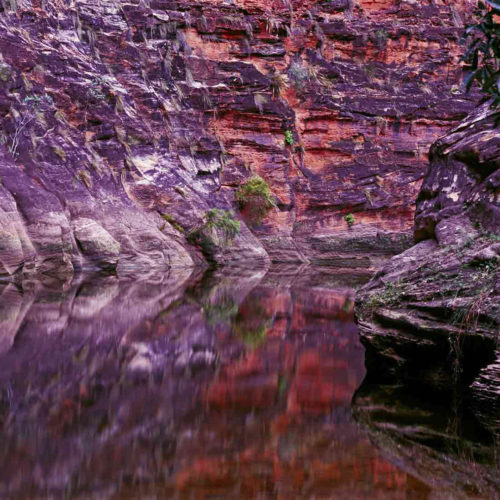
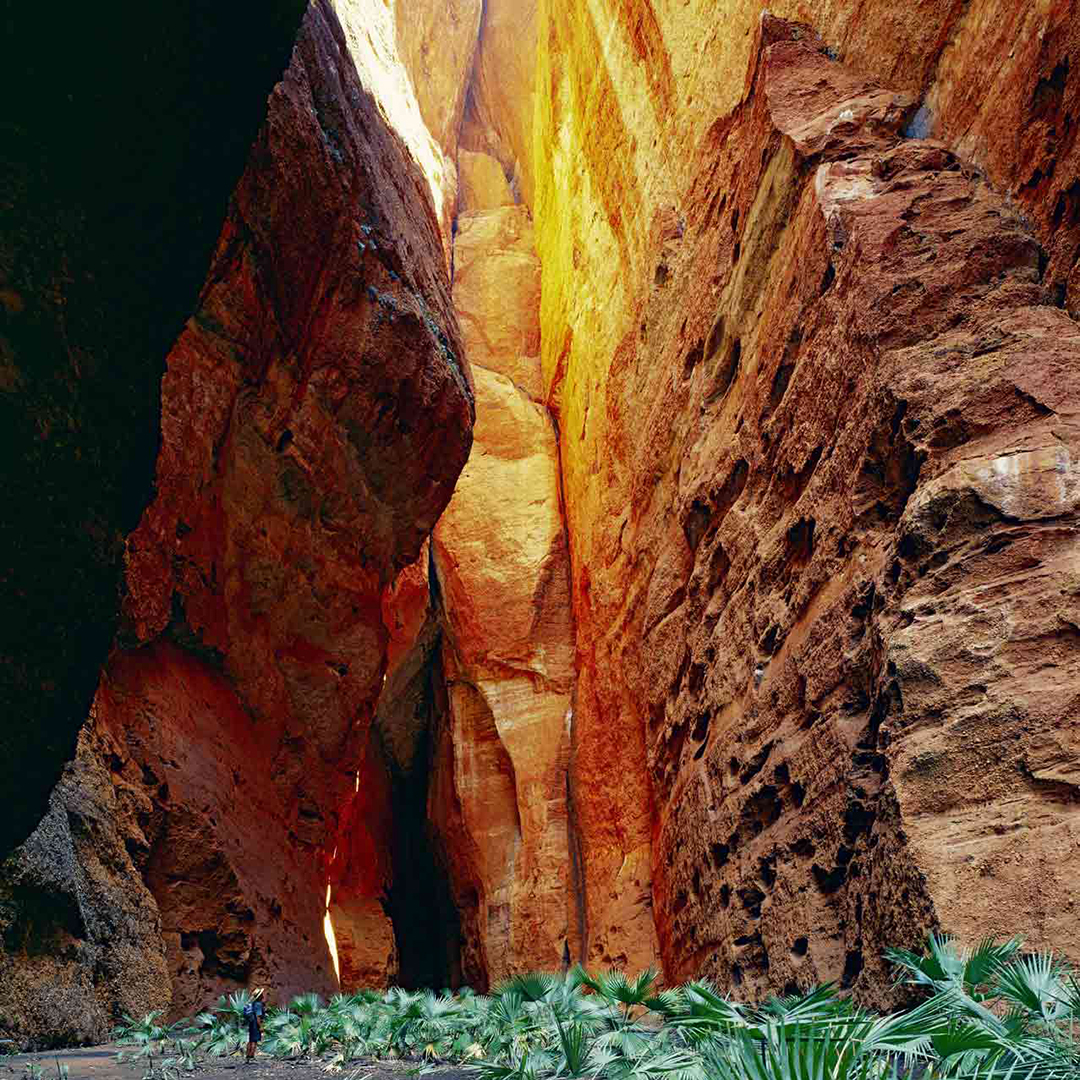
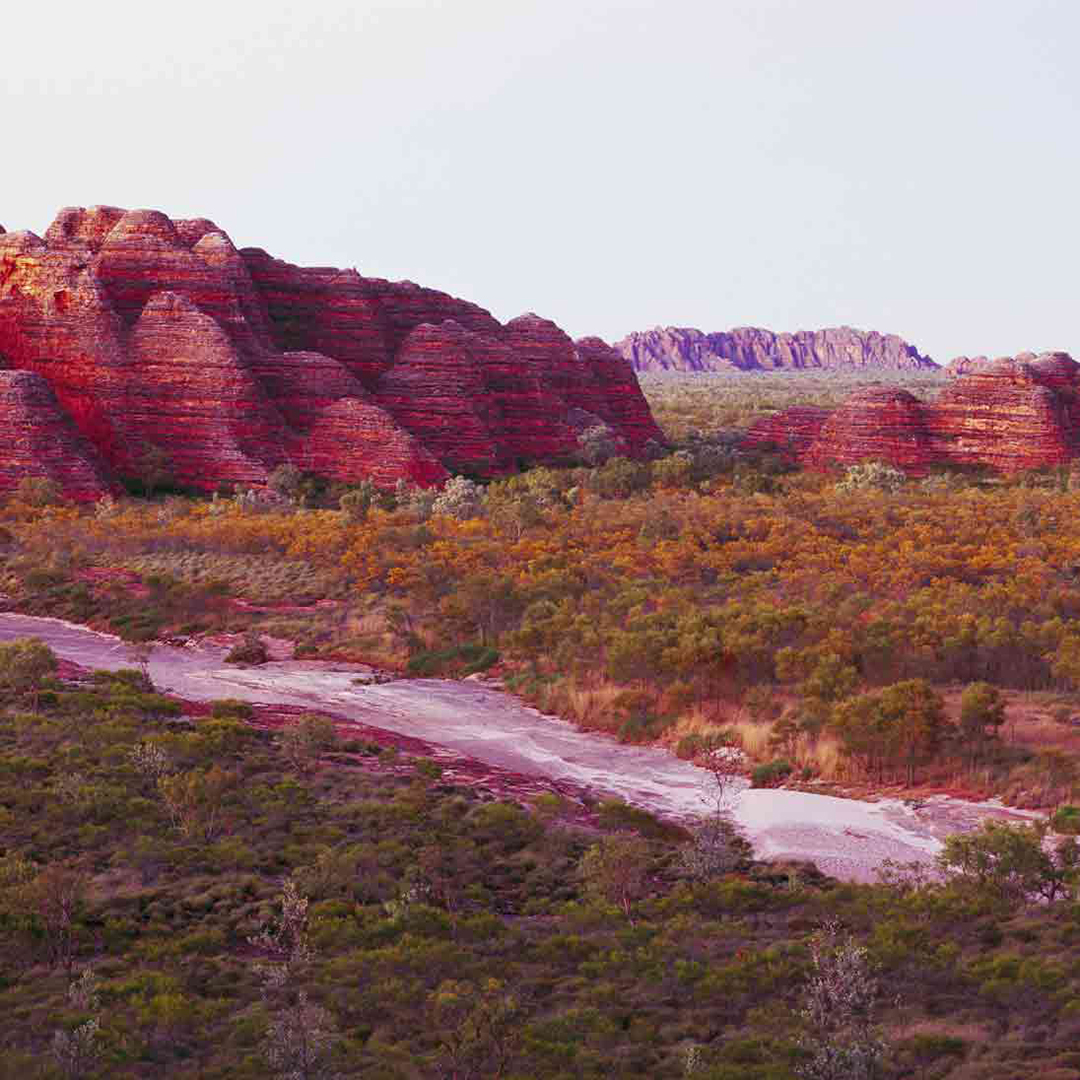
Image credits: Nick Rains
The park’s premier walk heads away from the built walkways. It requires a full backpack and camping experience as you head up Piccaninny Gorge, initially through the main Bungles formations. After crunching over river rocks and slogging through thick sand for the best part of a day, you’ll reach the area where the outstretched tributaries, called the Fingers, stretch towards the plateau on top of the range.
Military dragon lizards scuttle across the rocks and the long-tailed Mertens’ water monitors wiggle like sea snakes through rock pools populated by small fish. The morning air is thick with the honeyed aroma of spinifex resin – Purnululu has 13 species, the highest diversity in Australia, because it’s where the desert plants meet their northern cousins. Some of the spinifex species are soft, gently brushing the calves of passers-by. But others are the needle-sharp, hard varieties that stab and pierce, injecting stinging resin. I guess it’s one way that the gorge discourages too many explorers.
At the Fingers, I find Marian Lester walking barefoot through the spinifex. She tells me she’s with a party of women friends, relaxing and skinny-dipping. She’s been bringing people up this gorge since 1991. “It still takes my breath away every time I come here,” she says. “Different seasons, different light”.
Marian’s group is camping up the gorge for 10 days. “I wouldn’t bring people in for anything less than five nights – you’ve done all the hard work to get in here, so you may as well enjoy it”, she says.
On my last afternoon in Purnululu, I pick my way through spiky spinifex and a natural orchard of low-growing bush tomatoes. The Bungle Bungle massif in the east glows in the late afternoon sun and a smattering of termite mounds, 2 m or so in height, echo the shapes of the Bungles on the other side of the range.
Meanwhile, lines of dust in the green and rust-brown landscape show more tourists arriving, keen for their own glimpse into the Bungles’ rich treasure chest.
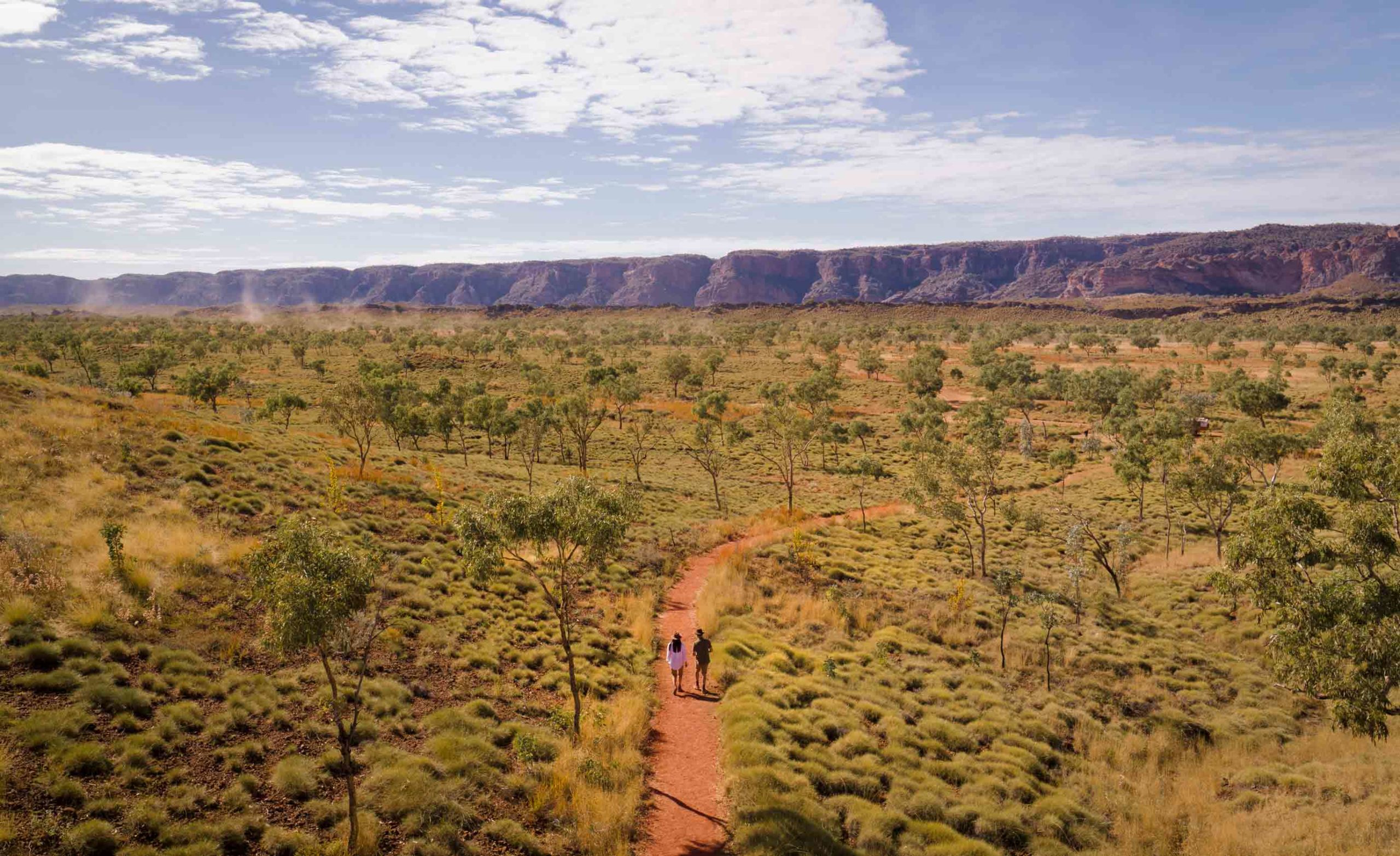
The best time of year to visit the Bungles is in the dry season. Image credit: Tourism Western Australia
As we jet across the billabong, a large white cloud mass starts spitting rain. The escarpment makes for a dramatic backdrop, and from this vantage point, as we swerve around the tips of submerged termite mounds, the power and sheer scale of Kakadu’s dramatic Wet-Dry cycle really hits home. In a matter of months, this expanse will be a stretch of dry savannah woodland. I’m glad I’ve seen Kakadu’s ever-changing landscape at its wettest.
I recall my conversation with Sarah Kerin. “I would definitely recommend people come twice”, she’d said. “There’s nothing more beautiful than looking up over the escarpment at a canopy of stars on a dry-season night. Or simply going out and walking around Anbangbang Billabong on an early dry-season morning when you have the mist and you can smell the swamp and the lilies. It’s just beautiful. During the wet season the park is entirely different. It’s characterised by rejuvenation and a refreshment of the landscape”.
How to Explore Purnulu
More than 43,000 people visit this World Heritage-listed national park annually, most to behold the beehive domes of the Bungle Bungle Range – fragile formations eroded over 20 million years.
Amazing as they are, there’s a lot more to uncover in the wide expanses of the Kimberley region. Take water, food, fuel and other supplies: this area is remote with limited supplies available and mostly untreated bore water, which is unsuitable for drinking.
THE ESSENTIALS
WHERE: Purnululu is in the East Kimberley region, 2800 km north of Perth.
WHEN: Only accessible during the Dry, closed during the Wet (October–March), when temperatures can climb to well over 40°C.
HOW: Take a 4WD from Perth or fly from Perth into Kununurra and pick one up there.
DON’T MISS: Horizontal Falls, located on the north-western coast of the Kimberley.



